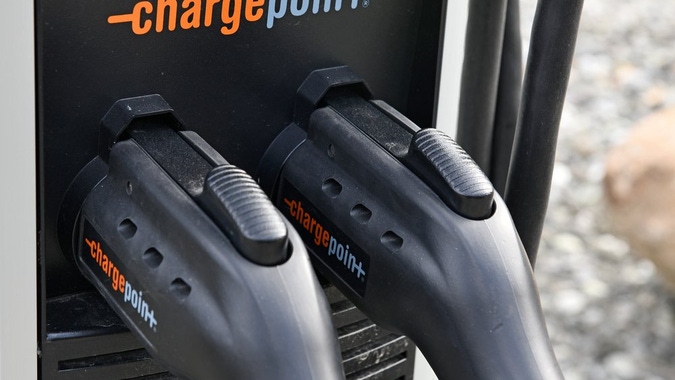Chargepoint (NYSE: CHTP) reported weaker than expected earnings on Tuesday, but the stock rallied anyway in after-hours trading. The company continued to witness strong growth with charging revenue doubled to $84 million, up from $40 million during the same quarter last year. The significant increase can be attributed to both increasing prices, and demand for Chargepoint’s services. Total revenue also increased significantly coming in at $108 million up from $56 million during the same quarter last year. Despite positive revenue growth, losses continued to accumulate with total losses coming in at $92 million during the quarter, up from $84 million in the same quarter last year. Chargepoint’s management has guided that third-quarter revenue will come in around $125 million, bringing total yearly revenue to around $450-500 million.
Chargepoint currently has over 200,000 charging stations, and currently has a 70 percent market share in North America. The company continues to be at the center of the EV charging revolution, and total investment in EV infrastructure, in both North America and Europe, is expected to hit $60 billion by 2030, which should help drive revenue. The company has more competition in Europe, with the likes of Shell (NYSE: SHEL), offering Shell Recharge.
The CEO states the following:

MarketBeat.com – MarketBeat
“ChargePoint delivered another strong quarter, with continued growth across all verticals and geographies,” said Pasquale Romano, President and CEO of ChargePoint. “We continue to execute on our strategy, as demand continues to grow for our portfolio of industry-leading charging solutions for every vertical and in both North America and Europe.”
Does Chargepoint have a viable business model?
Margins continued to be under pressure during the quarter, largely as a result of supply chain disruptions. Gross margins declined by 200 basis points falling to 17 percent down from 19% in the previous quarter.
The vast majority of Chargepoint’s revenue continues to be from the United States, meanwhile, Europe, albeit slower, is increasingly becoming a larger part of Chargepoint’s total sales. Growing EV sales continue to be the biggest factor driving the company’s revenue, and current estimates show a 66% increase in EV sales during the latest quarter. EV sales in the third quarter could see similar percentage increases, despite charging costs going up.
But issues remain as survey’s have shown that only about a quarter of electric car buyers are willing to rely on public charging networks for their electric vehicle charging needs.
” That’s according to research published today (Aug 17) by What Car? whose poll of 1,276 buyers – of which 265 (20.7 percent) were in the market for an EV – found 74.7 percent wouldn’t feel comfortable owning one if all they had were public chargers to recharge their car.A total of 92.8 percent of EV buyers surveyed could recharge their car at home or nearby, with 87.8 percent already owning or planning to install a wallbox charger.” Source (Autocar.co.uk)
“The J.D. Power U.S. Electric Vehicle Experience Public Charging Study, released today, surveyed 11,554 owners of battery electric vehicles (BEVs) and plug-in hybrid electric vehicles (PHEVs) from January through June 2022 in partnership with PlugShare, an electric vehicle app maker and research firm.” “Despite the number of stations increasing, customer satisfaction with them is worsening. Compared to 2021, satisfaction with public Level 2 charging infrastructure declined 10 points, from 643 to 633 on a 1,000-point scale.” Source (MSN.com)
Furthermore, used cars continue to witness a fall in prices, as well as increasing rates, combined with supply, weigh on prices, and with increasing oil supply coming into the market from countries such as Iraq, gasoline-powered vehicles may make a comeback later on this year, provided fuel prices remain stable or retreat.
Valuation for Chargepoint isn’t cheap either, the stock currently trades at 16x sales, and at such valuations, investors would be looking at significant increases in revenue to continue into the end of the year and 2023, in order for the stock to remain at the current levels. Otherwise, the company’s balance sheet remains strong, despite cash falling to $187 million, down from $315 million in the same quarter in 2021. Most of the decline can be attributed to short-term investments made by the company. Finally, long-term debt also remained steady for the quarter coming in at around $300 million.
Chargepoint’s fortunes are highly dependent on the EV revolution. While many car buyers are currently looking to buy EVs, the boom could easily turn into a bust, as the cost of raw materials, and user satisfaction wanes. Profitability also seems to be a few quarters away, as gross profit margins continue to be lower than what they should be in order for the company to make a profit. The low margins indicate that prices may have to increase before the company becomes profitable. Chargepoint remains an interesting EV play, but it isn’t without its issues.